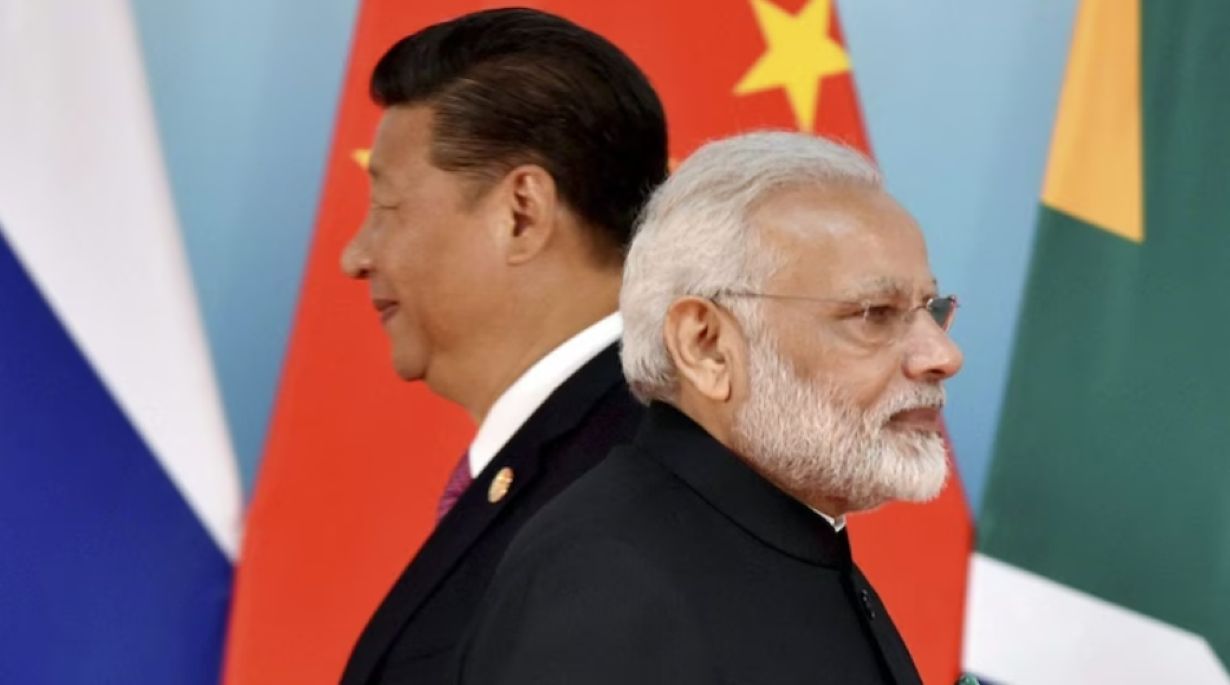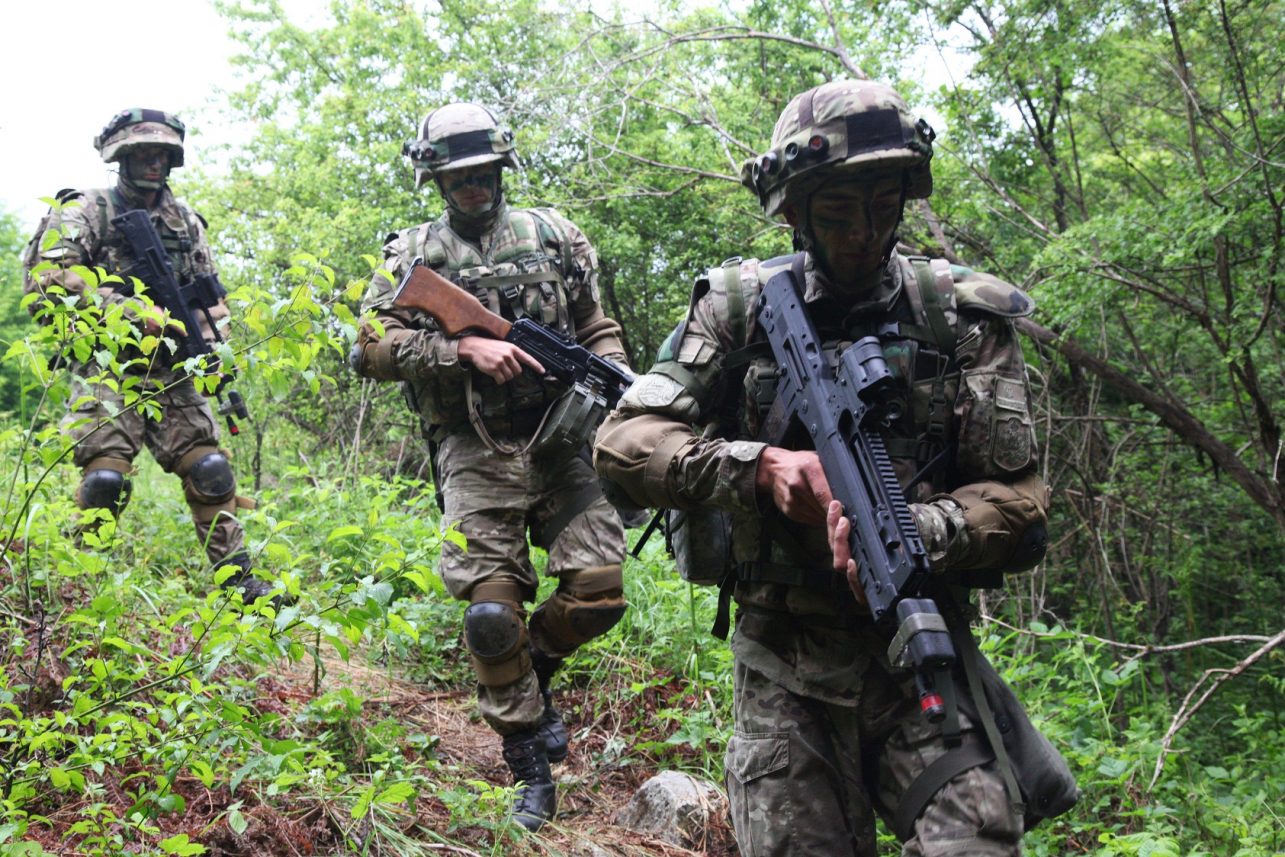India ‘Shadowboxes’ China In The Maldives; Looks To Knock Out Chinese Challenge In The Indian Ocean Nation
With the Maldives going for Presidential elections in September this year, Indian defense minister Rajnath Singh’s just concluded maiden visit to the strategically significant archipelagic state in the Indian Ocean is likely to raise a political storm.
The Indian factor, particularly the role of the Indian military, has always been a major controversial political issue in the Maldives.
On the one hand, the incumbent President Ibrahim Mohamed Solih and his Maldivian Democratic Party (MDP) have officially adopted what is known as the “India First Policy.”
On the other hand, the country’s principal opposition leader and former President Abdulla Yameen Abdul Gayoom and his Progressive Party of Maldives have run an “India Out” movement.
Yameen, as President between 2013 and 2018, had a distinct pro-China tilt. He halted the Indian projects and invited a series of Chinese infrastructure projects into the Maldives.

He signed a China-Maldives free trade agreement and made the country a member of the Chinese BRI (Belt and Road Initiative). By 2018, Beijing had completed a major upgrade—including a new 3,400-meter runway—at the Maldives’s main international airport, as well as a new bridge linking Male to the island of Hulhumalé.
But these investments proved really costly. By 2018, Chinese loans had saddled Male with nearly $1.5 billion in debt—a high figure for a nation with a GDP of less than $9 billion.
On the other hand, Solih’s “India First” policy reflects the simple geographic reality that India has long been and will remain Maldives’ closest friend and protector. In fact, in 1988, it was India that sent its paratroopers and naval ships to the Maldives to aid former President Maumoon Abdul Gayoom (Yameen’s half-brother), who faced a coup attempt by Sri Lankan Tamil mercenaries.
The last four years have seen the high flying exchange of mutual visits of the top officials and leaders of both countries. Solih has visited India thrice, and Modi attended his oath-taking ceremony in 2019 in Male, not to talk of the numerous trips of ministers and officials to each other.
Now, India has replaced China as the primary source of financing and support for infrastructure projects in the Maldives. India’s line of credit of $136.6 million went a long way toward the completion of the Male airport.
This has been India’s second-largest infrastructure project, following the $500 million Greater Male Connectivity project, which connects the Maldives capital to three neighboring highlands with a 6.74-km bridge and causeway over the sea.
It was India that supplied the Maldives with more than 100,000 Covishield vaccines in January 2021, at the peak of the pandemic. India has become the main destination for medical treatment of the people of the Maldives.
Even the main government-affiliated hospital in the Maldives, the Indira Gandhi Memorial Hospital in Male, was built with aid from the Indian government. In fact, when the country ran short of drinking water in 2014, it was India that sent ships of water.
It is against this competition between India and China over influence in the Maldives that one may see what exactly India’s so-called military presence in the country in recent years is.
A comprehensive Action Plan for Defence was signed in April 2016 to consolidate the defense partnership. India provides the largest number of training opportunities for the Maldivian National Defence Force (MNDF), meeting around 70% of their defense training requirements.

India has trained over 1400 MNDF trainees over the past ten years. MNDF has also been participating in various mil-to-mil activities such as joint EEZ patrols, anti-narcotic operations, SAR (search and rescue), sea-rider program, HADR exercises, adventure camps, sailing regatta, etc. Indian Navy has also provided MNDF with air assets for air surveillance, MEDEVAC (Medical evacuation), SAR, and Helo-borne vertical insertion capability.
India’s defense cooperation also extends to the areas of Joint Exercises, Maritime Domain Awareness, gifting of hardware, infrastructure development, etc.
Key projects in the Maldives’ defense sector include the Composite Training Centre (CTC) for MNDF, the Coastal Radar System (CRS), and the construction of a new Ministry of Defence Headquarters.
During the August 2022 visit of President Solih to India, the supply of a replacement ship for the earlier provided ship-CGS Huravee – to MNDF, the supply of the second Landing Craft Assault (LCA) to MNDF & Gifting of 24 utility vehicles to MNDF was announced. India also handed over 24 utility vehicles to the Maldives in Oct 2022.
Besides, there is the Annual Defence Cooperation Dialogue at the level of Defence Secretary (initiated in July 2016) and Annual Joint Staff Talks. MNDF continues to participate in various fora such as IONS, Goa Maritime Conclave, and Goa Symposium. There are presently three major joint exercises with Maldives that are held regularly.
MNDF regularly participates in Humanitarian Assistance & Disaster Relief, Search & Rescue (SAR), Pollution Control, and other exercises organized by New Delhi. India has provided pollution dispersant to MNDF Coast Guard.
New Delhi is also undertaking customized training for MNDF Fire and Rescue Service in India. In fact, during Aug 1-4, 2022, the official visit of President Solih to India, an MoU for cooperation in the field of disaster management between NDMA, India, and NDMA, Maldives, was signed.
India also provided a $50 million credit line to the Maldives in 2021 for defense projects, and a pact was signed to build the Uthuru Thila Falhu harbor. New Delhi is also developing its presence in Addu in the south, including constructing a new police academy and plans to open an Indian consulate there.
It is in tune with India’s commitment to capacity building in the Maldives that Rajnath Singh, during his visit between May 01-03, gifted one Fast Patrol Vessel ship and a Landing Craft to the Maldives National Defence Forces.
And during his talks with the country’s top leaders, including President Solih, Singh highlighted how the two countries were working closely to effectively address shared challenges, including maritime security, terrorism, radicalization, piracy, trafficking, organized crime, and natural disasters.

He explained how India’s vision of SAGAR (Security and Growth for All in the Region), along with its ‘Neighborhood First’ policy as well as Maldives’ ‘India First’ policy, could work together to jointly develop the capabilities within the Indian Ocean Region.
However, the pro-Chinese Opposition parties led by Yameen say that by intensifying military cooperation with India and bringing the Indian military personnel and platforms to the country, the Solih government has compromised on the country’s sovereignty and made the Maldives “a slave of India.” But then, it seems to be more of rhetoric than reality.
First, altogether there are only 75 (seventy-five) Indian military personnel stationed in the Maldives. Most of them operate two helicopters and a Dornier fixed-wing aircraft gifted by India.
And these helicopters are used mainly for carrying patients from remote 200 inhabited islands to regional healthcare centers or the capital’s hospital and conducting search and rescue operations. Besides, some of them happen to be the technical staff to maintain the aircraft as this technical expertise is not available locally.
Secondly, on the contentious issue of Uthuru Thila Falhu, the Maldivian government has clarified that it is simply implementing elements of the defense action plan signed by the previous government in 2016.
It is essentially a Maldives National Defence Force Coast Guard Harbor, which India has helped in building. It will strengthen Maldivian Coast Guard capability and facilitate regional HADR efforts.
And India was requested to build it by the then Maldivian government led by Yameen’s party in April 2013 as part of enhancing the capability of the Maldivian Defence forces (The agreement to this effect was signed by Yameen himself in 2016).
The third major target of the opposition’s skepticism happens to be the newly built police academy. The project was developed with the Indian government’s assistance and houses the National College of Policing and Law Enforcement. The opposition’s mistrust stems from the large size of the building and the surrounding complex.
Its contention is that this has been built to house more and more Indian military and intelligence people under the grab of teachers and instructors. This conjecture, however, is unfounded.
Fourthly, India’s security cooperation is open and transparent in the sense that it is also a part of trilateral maritime security cooperation involving Sri Lanka. This trilateral collaboration among India, Sri Lanka, and the Maldives is designed to initiate collective action on maritime security, including maritime domain awareness, legal regimes, training in search and rescue, maritime pollution response, information sharing, curbing piracy drugs arms and contraband trafficking and unregulated fishing.
And this is said to be extremely beneficial for the Maldives, which is critically dependent on the ocean for domestic food security and exports (particularly fish and related products).
It is in this context that Indian defense minister Singh said at Male that “There is a need for India, Maldives and other like-minded nations of the region to enhance our cooperation, towards addressing the common challenges of the Indian Ocean Region. We must, therefore, ensure a collaborative effort towards ensuring that the maritime expanse of the Indian Ocean is peaceful and the maritime resources therein are optimally harnessed for ensuring regional prosperity”.
How does China look at all this? Obviously, it would like the opposition leader Abdulla Yameen to dethrone Solih in the elections in September.
But, India, perhaps, thinks that such a situation will not arise as Yameen was sentenced on December 25, 2022, to 11 years of imprisonment on charges of money laundering and bribery when he was the President.
As per the electoral laws of the Maldives, no person convicted of a crime with a jail term of more than one year can be a Presidential candidate (Yameen is challenging the sentence, though).
But in politics, four months is a long time, and the pro-China opposition could always find another strong candidate, reportedly either Ghassan Maumoon, the son of former President Maumoon Abdul Gayoom, or Mohamed Muizzu, the mayor of Male.
- Author and veteran journalist Prakash Nanda has been commenting on politics, foreign policy, on strategic affairs for nearly three decades. A former National Fellow of the Indian Council for Historical Research and recipient of the Seoul Peace Prize Scholarship, he is also a Distinguished Fellow at the Institute of Peace and Conflict Studies.
- VIEWS PERSONAL OF THE AUTHOR
- CONTACT: prakash.nanda (at) hotmail.com
- Follow EurAsian Times on Google News
